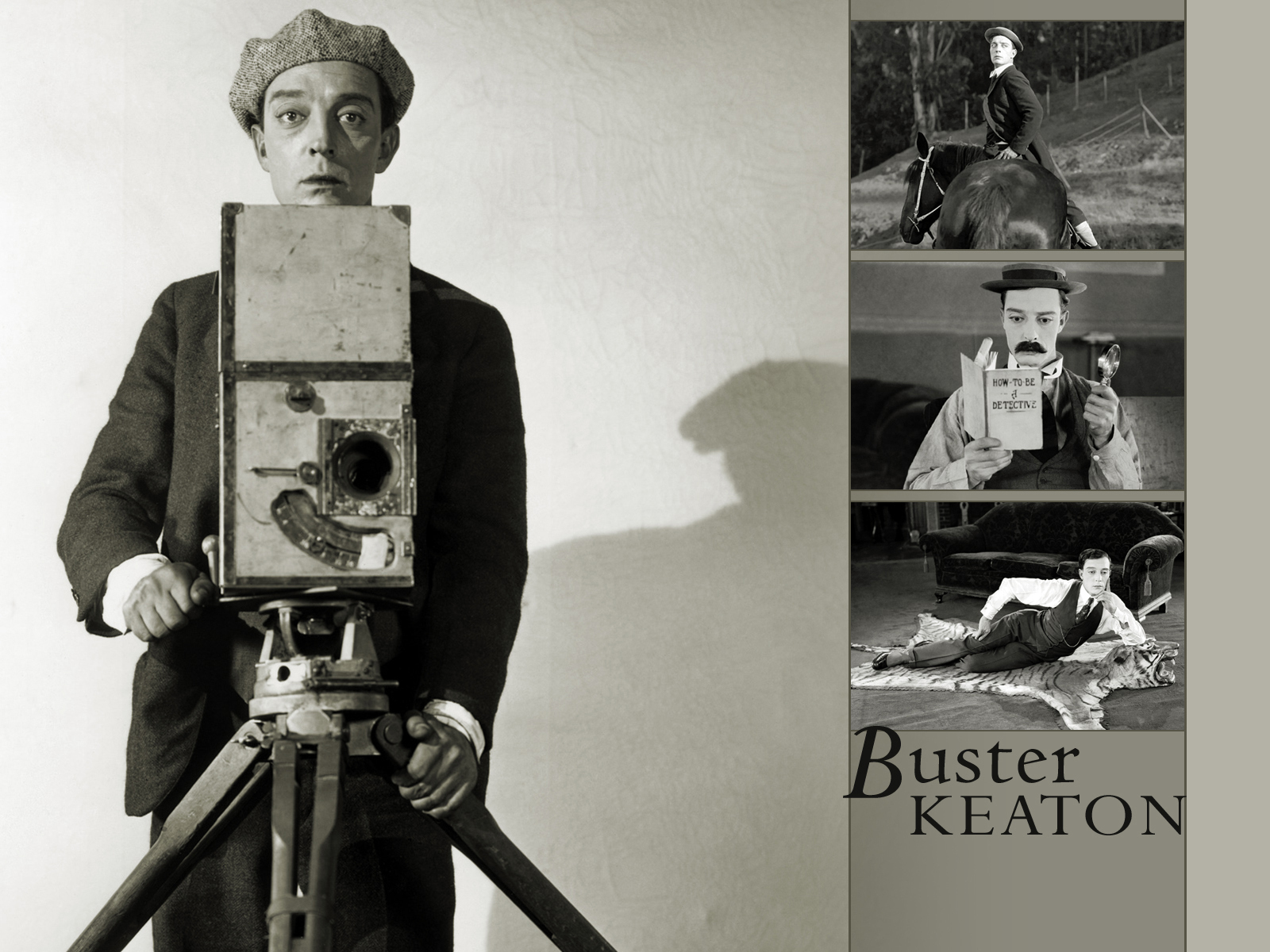

Buster Keaton didn’t use many title cards. A water spout knocked him unconscious on train tracks, and despite suffering from headaches, he didn’t know the extent of the damage until years later when an X-ray revealed the breakage. (1924), Keaton broke his neck-and somehow he didn't even realize it. On the set of The Electric House (1922), he broke his ankle. However, Keaton did injure himself a few times. "Keaton’s position on the ground had to line up exactly with an open window in the top of the house thankfully for him, it did," The Guardian wrote. One of his most remarkable stunts was done in the 1928 feature film Steamboat Bill, Jr., where a 4000-pound facade of a house fell on the actor. In the 1920s CGI didn’t exist, so actors either had to hire stuntpeople or do their own stunts Keaton chose the latter. Buster Keaton did most of his own stunts. Now write me a comedy.” Keaton also felt gags should be accomplished in one shot, and if not, the gag should be thrown out.

On The Navigator (1924), Keaton rented an ocean liner and reportedly told his writers: “There’s the boat. But sometimes the improvisation started from a visual. According to The Dissolve, Keaton and his writing team started with gags and visual stunts and conceived the rest from there. In an audio interview played over Tony Zhou’s 'Buster Keaton-The Art of the Gag' video essay, Keaton stated: “As a rule, about 50 percent you have in your mind when you start the picture and the rest you develop as you’re making it.” He hired “gag men” to write for him, including sportswriter Clyde Bruckman, who co-directed The General. Keaton believed in the art of improvisation. Buster Keaton didn’t like to work with a script. They picked me up … no bruises, didn’t seem to hurt myself, and Houdini said, ‘That was a Buster.’ And the old man says, ‘That’s a good name we’ll call him that.’” 2. In a 1963 interview, Keaton explained how he got his nickname from Houdini: "I fell down a flight of stairs when I was around six months old. When Keaton was born, his parents were performing with Harry Houdini in a medicine show (touring acts that promoted "miracle cures"). Harry Houdini gave Buster Keaton the “Buster” nickname.Ī 1905 photo of Buster Keaton as a child with his parents, Joe and Myra, with whom he formed a family vaudeville act. Along with Harold Lloyd and Charlie Chaplin, Keaton is known for being one of the three great silent-era comedians even today, Keaton's unique comedic stylings continue to influence many filmmakers, from Mel Brooks to Jackie Chan. In 1959, Keaton received an honorary Oscar.
BUSTER KEATON MOVIES ICE TV
But in the 1940s and 1950s, he made a comeback with feature films (including a worthy cameo as himself in ) and starring on TV shows. Once “talkies” arrived in the late 1920s, Keaton’s star began to wane. Welles described Keaton as “the greatest of all the clowns in the history of cinema.”


Among those films was 1926’s The General, which Orson Welles deemed one of the greatest films ever made. Over the next nearly 50 years, Keaton became one of Hollywood's most famous faces, starring in nearly 150 pictures-many of which he also wrote and/or directed. Just a few months later, Keaton partnered with Arbuckle again on The Rough House, which the two wrote, directed, and starred in together. In 1917, when he was 21 years old, Buster began transitioning into silent films, making his first onscreen appearance in The Butcher Boy with Fatty Arbuckle. Buster himself joined the family business and began performing with his parents on stage at the age of three they were known as The Three Keatons. Keaton was born into a vaudeville family: His father, also Joseph, was a performer and actor who worked with Harry Houdini. On October 4, 1895, Buster “The Great Stone Face” Keaton was born as Joseph Frank Keaton, in Piqua, Kansas-the small town where his mother, a dancer and singer, was when she went into labor.


 0 kommentar(er)
0 kommentar(er)
